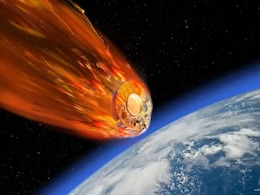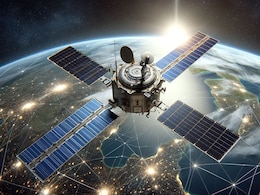Salsa Satellite
- All
- News
-

Scientists Chase Falling Satellite to Study Atmospheric Pollution from Spacecraft Reentries
- Wednesday May 7, 2025
- Written by Gadgets 360 Staff
In a rare airborne mission, scientists chased ESA's Cluster Salsa satellite as it reentered Earth's atmosphere. The fiery descent revealed emissions of lithium, potassium, and aluminum—chemicals that could impact the ozone layer and climate. With satellite reentries increasing, researchers aim to improve pollution models and plan further tracking...
-
 www.gadgets360.com
www.gadgets360.com
-

24-Year-Old Satellite To Burn Up Over Pacific Ocean On Earth Re-Entry
- Saturday September 7, 2024
- World News | Agence France-Presse
After 24 years diligently studying Earth's magnetic field, a satellite will mostly burn up over the Pacific Ocean on Sunday during a "targeted" re-entry into the atmosphere, in a first for the European Space Agency as it seeks to reduce space debris.
-
 www.ndtv.com
www.ndtv.com
-

Salsa Satellite Cluster Reentry to Occur On September 8, ESA Scientists Plan to Observe It Live
- Monday September 2, 2024
- Written by Gadgets 360 Staff
The European Space Agency (ESA) will witness a rare event as the first of four Cluster satellites, named "Salsa", re-enters Earth's atmosphere on September 8. This satellite, launched as part of ESA's Cluster mission, will burn up in an uncontrolled yet targeted reentry over a remote part of the South Pacific Ocean. The event presents a unique oppo...
-
 www.gadgets360.com
www.gadgets360.com
-

"Salsa's Last Dance": European Satellite Set To Re-Enter Earth After 24 years On This Date
- Friday August 30, 2024
- Science | Edited by Bhavya Sukheja
After 24 years of providing valuable data on Earth's magnetic shield, the European Space Agency's (ESA) satellite named Salsa is set to re-enter the atmosphere on September 8.
-
 www.ndtv.com
www.ndtv.com
-

Salsa Space Probe, Earth's Magnetic Guardian, Plunges Back to Earth After 24 Years
- Wednesday January 31, 2024
- Science | Edited by Nikhil Pandey
In the remaining months of scientific activity, the satellites will pass through the region where charged particles are accelerated, leading to the creation of Earth's auroras.
-
 www.ndtv.com
www.ndtv.com
-

Scientists Chase Falling Satellite to Study Atmospheric Pollution from Spacecraft Reentries
- Wednesday May 7, 2025
- Written by Gadgets 360 Staff
In a rare airborne mission, scientists chased ESA's Cluster Salsa satellite as it reentered Earth's atmosphere. The fiery descent revealed emissions of lithium, potassium, and aluminum—chemicals that could impact the ozone layer and climate. With satellite reentries increasing, researchers aim to improve pollution models and plan further tracking...
-
 www.gadgets360.com
www.gadgets360.com
-

24-Year-Old Satellite To Burn Up Over Pacific Ocean On Earth Re-Entry
- Saturday September 7, 2024
- World News | Agence France-Presse
After 24 years diligently studying Earth's magnetic field, a satellite will mostly burn up over the Pacific Ocean on Sunday during a "targeted" re-entry into the atmosphere, in a first for the European Space Agency as it seeks to reduce space debris.
-
 www.ndtv.com
www.ndtv.com
-

Salsa Satellite Cluster Reentry to Occur On September 8, ESA Scientists Plan to Observe It Live
- Monday September 2, 2024
- Written by Gadgets 360 Staff
The European Space Agency (ESA) will witness a rare event as the first of four Cluster satellites, named "Salsa", re-enters Earth's atmosphere on September 8. This satellite, launched as part of ESA's Cluster mission, will burn up in an uncontrolled yet targeted reentry over a remote part of the South Pacific Ocean. The event presents a unique oppo...
-
 www.gadgets360.com
www.gadgets360.com
-

"Salsa's Last Dance": European Satellite Set To Re-Enter Earth After 24 years On This Date
- Friday August 30, 2024
- Science | Edited by Bhavya Sukheja
After 24 years of providing valuable data on Earth's magnetic shield, the European Space Agency's (ESA) satellite named Salsa is set to re-enter the atmosphere on September 8.
-
 www.ndtv.com
www.ndtv.com
-

Salsa Space Probe, Earth's Magnetic Guardian, Plunges Back to Earth After 24 Years
- Wednesday January 31, 2024
- Science | Edited by Nikhil Pandey
In the remaining months of scientific activity, the satellites will pass through the region where charged particles are accelerated, leading to the creation of Earth's auroras.
-
 www.ndtv.com
www.ndtv.com






